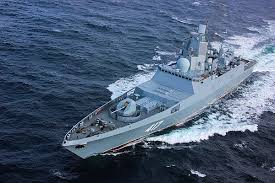F.P. Report
WASHINGTON DC: U.S. Naval Forces Central Com-mand (NAVCENT) establi-shed a new task force, Se-ptember 9, to rapidly integrate unmanned systems a-nd artificial intelligence w-ith maritime operations in t-he 5th Fleet area of operations.
Task Force 59 is the first U.S. Navy task force of its kind.
The U.S. 5th Fleet reg-ion’s unique geography, climate, and strategic importance offer an ideal environment for innovation.
“The bottom line on why we’re doing this is so that we can develop and integrate unmanned systems and AI as a means to do two things,” said Vice Adm. Brad Cooper, commander of NAVCENT, U.S. 5th Fleet and Combined Mariti-me Forces. “One, enhance our maritime domain awar-eness, and two, increase deterrence.”
Cooper also stated the task force would rely heavily on regional and coalition partnerships.
“The launch of Task Force 59 really invigorates our partnerships around this region as we expand our common operating picture.”
Cooper appointed Capt. Michael D. Brasseur, an expert in maritime robotics, as Task Force 59’s first co-mmodore during a commissioning ceremony onboard Naval Support Activity Ba-hrain, Thursday. Brasseur served as a founding member of the NATO Maritime Unmanned Systems Initia-tive prior to arriving in Bahrain.
“It’s an honor to be named commander of this historic and innovative task force,” said Brasseur. “As we continue to adapt and implement cutting edge technology, I fully expect our talented team will enrich and enhance the 5th Fleet mission.”
Brasseur’s staff includes experienced operators with region-specific expertise, including directors for unmanned systems; unma-nned exercises; task force integration; cyber, AI and space; and partnership opportunities.
In the coming weeks, the task force aims to build trust and confidence in human-machine teaming through a series of operations at sea. International Maritime Exercise (IMX) 22, slated for next year, will provide NAVCENT a real-world opportunity to demo-nstrate the resiliency and scalability of human-mach-ine teaming technologies.
IMX-22 will include more than 60 nations and international organizations and features the extensive use of unmanned systems in various operational scenarios designed to challenge the technology in a dynamic environment and ultimately enhance partner capabilities through mann-ed and unmanned teaming.
The U.S. 5th Fleet area of operations encompasses nearly 2.5 million square miles of water area and includes the Arabian Gulf, Gulf of Oman, Red Sea and parts of the Indian Ocean. The region is comprised of 21 countries and includes three critical choke points at the Strait of Hormuz, the Suez Canal and the Strait of Bab-al-Mandeb at the southern tip of Yemen.






